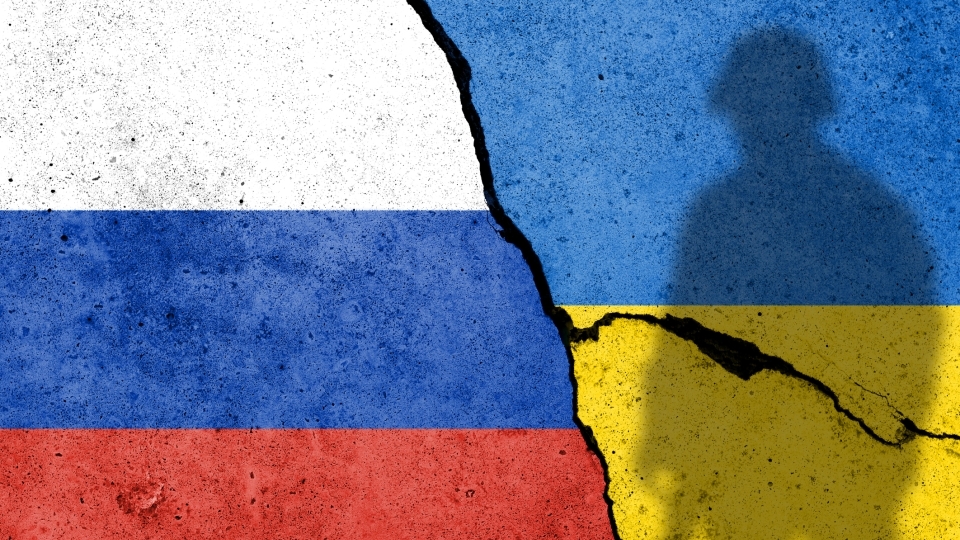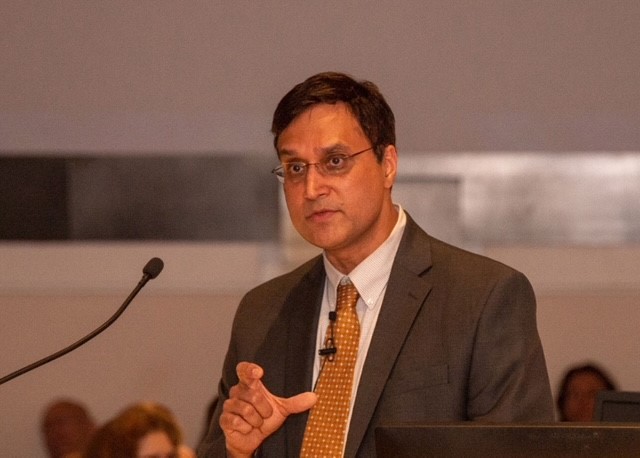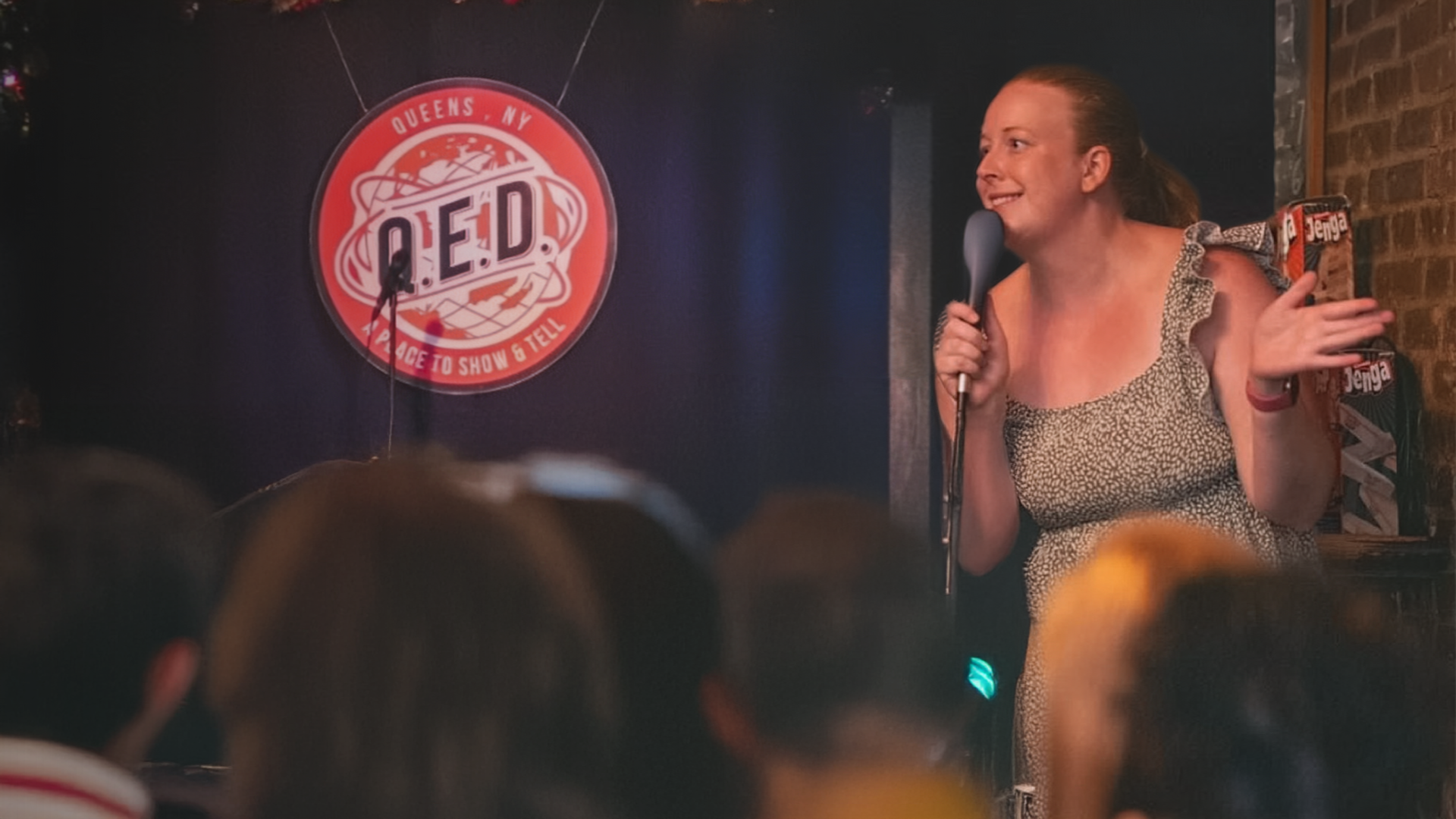Davidson Prof: Russian Belligerence Toward Ukraine Intended to Rewrite Post-Cold War Security Arrangements in Europe
February 24, 2022
- Author
- Jay Pfeifer

February 24, 2022 Update
Russia President Vladimir Putin’s long campaign to restore Russian influence has now advanced to open fighting in the Ukraine. On Feb. 24, 2022, Putin ordered Russian troops into Ukraine, marking the beginning of the first land war in Europe since the end of World War II. Russia’s invasion, however, only brings more questions.
Besir Ceka, associate professor of political science, answered these questions in January during Putin’s buildup of forces on the Ukraine border. They are more relevant than ever given recent developments.
Originally published January 19, 2022
Tensions between Russia and NATO continue to build. Even as weeks of diplomatic talks wrap up, 100,000 Russian troops remain poised on the border of Ukraine, a former Soviet state that has built ties to the West. However, Ukraine’s continued shift to democracy and the NATO alliance presents a direct threat to Russia’s President Vladimir Putin, who is bent on restoring Russian influence. Putin has waged a long campaign to destabilize Ukraine by annexing Crimea and stoking a simmering civil war over the past decade.
What Putin and the Russian military will do is still unclear, but Putin’s goals are no secret, says Besir Ceka, associate professor of political science and an expert on European politics.
“Russia wants many things,” he said, “but they all amount to a major rewriting of the post-Cold War security arrangements in Europe.”
Ceka shares his insights below:
What does Russia want?
Russia claims to be threatened by NATO. Putin issued a set of outlandish demands ahead of talks with the U.S. and other NATO members that began on Dec. 10 to diffuse the Ukrainian crisis. They include binding guarantees of no further NATO expansions to the East (not just Ukraine), no defense of U.S. allies with tactical nuclear weapons or short-range and medium-range missiles, and a Russian veto power over NATO troop deployment in the territories of its Eastern European members. NATO is a U.S.-led defensive alliance founded in 1949 to counter the Soviet threat in Europe. It’s enlargement after the dissolution of the Soviet Union in 1991 is a major sticking point because many in Russia believe that the West reneged on its promise of no further expansion.
Putin harbors deep resentments against the West, and particularly the U.S., for taking advantage of a weakened Russia during the 1990s and early 2000s to expand the NATO alliance eastward, but undermining Ukraine plays an even more important role for Putin’s regime.
A successful, democratic, and Western-oriented Ukraine poses an existential threat to Putin’s kleptocratic and authoritarian regime because it provides a successful alternative model on Russia’s doorstep. What Putin’s regime fears the most is not NATO but its own people on the streets seeking to overthrow the regime. Bullying Ukraine and ensuring that its pro-Western leaders fail guarantees that Ukraine doesn’t become a model for Russians.
What will the U.S. do if Russian troops cross into the Ukraine?
The Biden administration has done something unusual which is to telegraph the specific actions the U.S. and its allies will and will not take in case Russia invades Ukraine. The U.S. has made it clear that it does not plan to intervene militarily with boots on the ground because it won’t risk a nuclear exchange over Ukraine.
However, the U.S. and its European allies have spelled out the specific actions they are considering, and they include ejecting Russia’s financial institutions from the SWIFT banking system, giving military aid to the Ukrainians to mount a protracted insurgency against the much stronger Russian army, positioning more NATO troops close to Russia to bolster the security of threatened NATO members, and banning the export of computer chips or even all consumer goods to Russia.
These threats are intended to change Putin’s calculations and deter him.
What will Russia do?
No one really knows. On the one hand, the fact that Putin issued a set of highly unrealistic demands ahead of talks with the U.S. is worrisome because such maximalist demands might have been designed to be rejected and, thus, to give Putin the pretext to invade Ukraine.
On the other hand, the highly visible amassing of 100,000 soldiers on the Ukrainian border could be construed as a show of force not so much intended for an actual invasion but as a bargaining chip in high-stakes negotiations to change the terms of the security game in Europe. In either case, this episode is likely to curb NATO’s appetite for a future enlargement to include Ukraine and Georgia, which it has declaratively supported in the past.
What’s not in doubt is that Putin is trying to rewrite the rules of the post-Cold War order in Russia’s favor.



